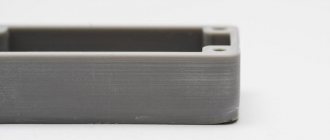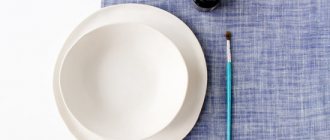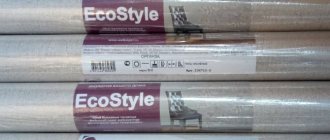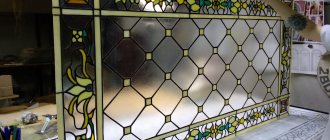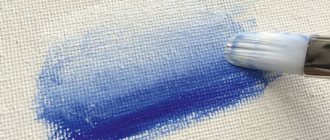What is the reason for such a high popularity of acrylic?
Acrylic paints have a wide range of advantages. Combining the advantages of oil and watercolor paints, they also have their own unique characteristics. Firstly, they dry very quickly, and secondly, they have excellent covering power, and they also have incredible color brightness. The colors of the paints do not fade over time, as happens with oil paints, and do not fade in the sun, like watercolors.
As acrylic paints dry, the water contained in the composition evaporates from the painted surface, leaving behind the binder and pigment, which form a durable, elastic coating. This coating is not washed off with water; it can only be removed by applying a sufficiently strong mechanical force. If you compare acrylic paint with oil paint, then acrylic after drying is more durable and less fragile, does not form cracks and does not crumble over time, it does not wrinkle, since it is not so sensitive to small changes in temperature and humidity.
Getting started with acrylic paint
buy acrylic paint in tubes or jars of various sizes; in tubes it is usually of a thicker consistency, in jars it is thinner. However, regardless of the thickness, upon completion of work, containers with paints must be closed with a lid very tightly, otherwise they may dry out irreversibly. The neck of the jar or tube should be freed from paint residues to prevent them from firmly adhering to the lid.
Since contains water, water can be used as a thinner, as well as for cleaning brushes and other tools. But you need to remember that you should wash your brushes immediately after use, otherwise they will simply become unsuitable for further use due to the already mentioned property of the paint not to react to the effects of water after drying.
If you dilute acrylic with water to a more liquid state, you can even use it in watercolor techniques. It is able to reproduce all the properties of watercolor and dry just as quickly.
In addition to water, there are many other thinners for acrylic. On sale you can find various special compositions that affect the “behavior” of paints during operation. For example, there are glossy and matte thinners, which, when dry, form a glossy and matte paint finish, respectively. There are also thinners that increase the drying time of acrylic paint, if this is necessary during the work process and to create any effects.
Acrylic can also be used as a basis for subsequent work in other techniques. For example, it is possible to prime or create a textured base with quick-drying acrylic, and then use oil paints for the classical painting technique. When combining oil and acrylic, you must remember that you should apply oil to acrylic, but not vice versa.
Immunity to the influence of weather conditions allows the use of acrylic-based compositions even outdoors. All kinds of textured acrylic gels and pastes can be used to create three-dimensional relief images. The ability to interact well with almost any surface makes acrylic suitable for painting wood, leather, fabric, ceramics, glass, earthenware and other materials.
Source: magazinhudozhnik.ru
Using paints when decorating crafts
- April 5, 2012
Competition "Children's Research Project - 2012"
Nomination "First experiments"
Hypothesis : All paints are suitable for working with various materials.
Subject of research : acrylic, oil, watercolor, gouache paints.
Materials : paper, cardboard, plastic, wood, plaster, glass.
Goal: find out which paints are suitable for crafts made of paper, cardboard, plastic, wood, plaster, and glass.
Experiment progress : Paints were applied to various surfaces.
Drying time, water washability, color brightness, color transparency, uniformity of application to the surface were taken into account
Paper
| Type of paint | Drying time | Washing off with water | Color brightness | Color transparency | Uniformity of application |
| acrylic | 15 minutes | +- | + | + | — |
| gouache | 20 minutes | + | + | — | + |
| watercolor | 30 min | + | +- | + | + |
| oil | 60 min | — | + | — | + |
Conclusion: Oil paints are not washed off with water, gouache and oil give a matte color after drying, watercolor turned pale, acrylic could not be applied evenly to paper, oil and watercolor took the longest to dry.
Cardboard
| Type of paint | Drying time | Washing off with water | Color brightness | Color transparency | Uniformity of application |
| acrylic | 17 min | +- | + | + | — |
| gouache | 25 min | + | + | — | + |
| watercolor | 40 min | + | +- | + | + |
| oil | 1,5 hour | — | + | — | + |
Conclusion: Oil and watercolor took a long time to dry; acrylic and oil were not washed out by water, watercolor turned pale after drying.
Plastic
| Type of paint | Drying time | Washing off with water | Color brightness | Color transparency | Uniformity of application |
| acrylic | 10 min | + | +- | + | + |
| gouache | 40min | + | + | — | — |
| watercolor | 40min | + | + | + | — |
| oil | 3 hours | — | + | — | + |
Conclusion: The oil dried for 3 hours, was not washed off with water, watercolor and acrylic became transparent after drying, it was not possible to apply gouache and watercolor to plastic, they curled up on the surface in the form of blots.
Tree
| Type of paint | Drying time | Washing off with water | Color brightness | Color transparency | Uniformity of application |
| acrylic | 30 min | +- | + | + | — |
| gouache | 40min | + | + | — | + |
| watercolor | 40min | + | — | — | + |
| oil | 3 hours | — | + | — | + |
Conclusion: oil paints took the longest to dry, acrylic and oil are not washed out by water, watercolor turned pale after drying, acrylic remained transparent after drying, but streaks were obtained.
Gypsum
| Type of paint | Drying time | Washing off with water | Color brightness | Color transparency | Uniformity of application |
| acrylic | 20 minutes | +- | + | + | — |
| gouache | 2 minutes | + | + | — | + |
| watercolor | 5 minutes | + | +- | — | + |
| oil | 2 hours | — | + | — | + |
Conclusion: Oil took the longest to dry, oil and acrylic were not washed off with water, acrylic retained its transparency and was applied unevenly.
Glass
| Type of paint | Drying time | Washing off with water | Color brightness | Color transparency | Uniformity of application |
| acrylic | 30 min | +- | +- | + | + |
| gouache | 40min | + | + | — | — |
| watercolor | 40min | + | — | — | — |
| oil | 3 hours | — | + | — | + |
Conclusion: oil took the longest to dry, oil and acrylic were not washed off with water, acrylic and watercolor turned pale after drying, acrylic remained transparent, it was not possible to apply gouache and watercolor evenly.
Result:
- Paints are applied to surfaces in different ways. For each craft you need to select your own paints
- Gouache and watercolor are not suitable for glass and plastic, as it is impossible to apply them to these surfaces
- Acrylic is suitable for all crafts. Uneven application on paper, cardboard, plaster
- Gouache is suitable for crafts made of paper, cardboard, plaster, and wood. It dries quickly and produces a deep matte color.
- Watercolor is suitable for crafts made of paper, wood, and plaster. Paints take a long time to dry, and after drying they fade greatly.
- Oil paints are suitable for all materials. Disadvantages: long drying time; are not washed off with water; require solvents that are harmful to health.
Appendix 1: Full text of the work.
Appendix 2: Presentation.
Author: Anton Kotlov, 8 years old, Grigory Kotlov, 8 years old, 1st grade students of MBOU secondary school No. 4, the city of Polyarnye Zori, Murmansk region.
Head: Lyudmila Ivanovna Semenova, teacher of the highest category, Municipal Budgetary Educational Institution Secondary School No. 4, the city of Polyarnye Zori, Murmansk region.
Methods for removing acrylic paint
Water-soluble compounds have long been used for exterior and interior decoration. Their advantage is that drops of paint that fall on textiles or other surfaces during the work process can be removed. Acrylic paints are especially popular, and whether they are washed off with water depends on the time that has passed after application. Only fresh stains can be quickly removed. Removing old stains requires the use of special products.
Sometimes acrylic paint can be difficult to wash off.
Why the coating may not wash off well
Removing stains and streaks can be difficult for the following reasons:
- Features of paint composition and coating formation. Acrylic paints consist of a water-dispersion base and polymer additives. During the drying process, a film is formed that is designed to protect the surface from the effects of negative factors. It is not easy to wash it off with water.
- Recency of application. Sometimes the brush and roller come into contact with surfaces that are not intended to be painted. You need to start cleaning within an hour. After hardening, it will not be possible to wash off drops of paint with water.
Rating of the best washable paints
| Nomination | Place | Name | Price per LITER |
| Rating of the best washable paints | 1 | Dulux 3D White | 125 ₽ |
| 2 | Tikkurila Euro Power 7 | 332 ₽ | |
| 3 | Tikkurila Liitu | 1 412 ₽ | |
| 4 | Alpina Effect Impression | 550 ₽ | |
| 5 | Dulux Colors of Kingdom | 732 ₽ | |
| 6 | Marshall Maestro Interior Fantasy | 244 ₽ | |
| 7 | Beckers Elegant Vaggfarg Helmatt | 328 ₽ |
Dulux 3D White
Rating: 4.9
Why it: Gives dazzling whiteness to the walls, making the room as bright and spacious as possible.
The wall paint is developed using a new formula with the addition of optical brightener and natural marble particles. This ensures an increased degree of whiteness even on a matte structure. As the name 3D White suggests, the paint creates a 3D effect, making painted walls appear larger and ceilings higher. Customer reviews confirm that the paint is really super white.
Applying washable paint to walls is permitted with a brush, roller or spray. For the latter, you will need a dilution with water in a ratio of 1:10 and a nozzle with a flow diameter of 0.012-0.017 inches. The material lays flat and without drips. The surface dries in 4 hours. With the correct spray gun settings, you can paint up to 13 square meters with one liter.
The paint is suitable for walls made of plasterboard, brick, concrete or plastered surfaces. The decorative coating lasts a long time in moderately damp rooms (children's room, bedroom, living room, corridor, closet). The product is certified for use in educational and medical institutions. It is allowed to start painting work at a room temperature of +5 degrees.
Advantages
- applied without splashing;
- no unpleasant odor;
- creates a 3D effect;
- low consumption;
- really super white.
Flaws
- suitable for rooms with moderate humidity;
- For spraying with a spray gun, only a 0.012-0.017 inch nozzle is suitable.
Ways to remove drops from objects
When choosing a method for removing drips, take into account the application time and type of base.
Immediately after the stain appears
Fresh paint from glass or other materials is washed off with soapy water. The product is applied with smooth movements of the sponge. After a few minutes, the composition is removed with water. The same method can be used to remove stains from fabrics. To remove paint from your hands, standard washing with soap is sufficient. The tools are soaked in a bucket of warm water for half an hour, after which they are thoroughly washed.
The time it takes for the stain to appear is several hours (up to a day)
In this case, use a degreaser:
To completely remove the stain, the liquid is applied several times . After dissolution, the acrylic film is removed with water. Cleaning clothes is done in the same way. When applying a degreasing composition, take into account the type of fabric. Wool, silk and brightly colored materials should not be treated with solvents.
Several days or more have passed
To remove old stains from wood or metal, aggressive compounds are used:
- kerosene;
- petrol;
- brake fluid;
- White Spirit;
- cosmetic nail polish remover.
Before starting work, put on rubber gloves to protect your hands from the negative effects of aggressive substances.
The selected liquid is applied to the surface with a sponge. The hardener of the acrylic paint composition dissolves after half an hour. During this time, the product is applied 2-3 times. The softened film can be easily removed with a rag soaked in solvent. Fabric is considered a more durable base than foam.
How to remove dry paint
Acrylic can be washed using more aggressive methods. Moreover, they should be selected taking into account the properties of the material on which the stain formed. Solvents are not suitable for colored fabrics. Such compositions may adversely affect the product. The same applies to wooden structures coated with paints and varnishes. It is permissible to use improvised means and special substances.
You can remove façade paint using a special remover. It is used to remove acrylic composition from plaster and other types of materials. You can wash off acrylic paint from wood using a special gel-like product. In this case, you must adhere to the manufacturer's instructions. There is another method for removing acrylic - heating. However, not all materials withstand high temperatures well.
We use acetone
This substance is used instead of ammonia. First you need to remove excess paint from the product. To do this, use a paper towel - it should absorb the excess dye.
To remove acrylic paint from clothing, you need to soak a sponge in acetone. The amount of solvent should be moderate. Then rub the stain with a sponge. In this case, you should not make significant efforts, as this can damage the structure of the material. When the main amount of paint has been removed, the item must be washed in a machine, choosing a mode suitable for the type of fabric. The procedure is repeated if the stain has not completely disappeared.
Scotch tape to the rescue
On cotton fabric and linen material, the paint often remains on the surface, which allows you to remove it with adhesive tape. This method cannot be used if the contamination is fresh. Its disadvantage is the incomplete removal of paint and varnish materials. For this reason, this method can be used as an auxiliary measure. First, remove excess paint with a blunt object, then remove the particles with tape. To do this, you need to stick a strip of adhesive tape and smooth it over the surface. All that remains is to quickly remove the tape.
Removing acrylic with dishwashing detergent
It is necessary to prepare the solution: use warm water and dishwashing liquid. You need to moisten a rag in the solution and rub the stain. This is a universal method, suitable for removing acrylic paint from different types of fabric, since the detergent does not have a negative effect on the canvas. If the stain cannot be removed, use a sponge. It is harsh and may damage delicate fabrics. Sometimes it is necessary to replace the sponge with a toothbrush. After removing the bulk of the dirt, the product should be rinsed in cold water.
We use alcohol
This is an aggressive substance; before using it, you need to check how the fabric behaves. To do this, apply a minimal amount of alcohol to an inconspicuous area of the material. If the fabric does not lose its properties, you can remove the stain: a swab soaked in alcohol is applied to the contaminated area, and after 15 seconds the paint is wiped off. The direction of movement in this case is from the edge to the center.
Denatured alcohol for any stains
This is a flammable substance and is toxic. It must be used after making sure that the material does not change its properties upon contact with such a product. The principle of using denatured alcohol is the same as in the case of alcohol: apply a swab soaked in the solution to the stain, then wipe it off. After this, all that remains is to wash the product.
Heating as a method of removal
It is not always possible to use chemicals at home. In this case, traditional methods of removing paint from walls and other surfaces are used. You will need a hairdryer to warm up and soften the stain.
Removal is done like this:
- Contaminated areas are wiped with soapy water. A stream of hot air is directed onto the stain, and the hair dryer is held for 5-15 minutes.
- The softened paint is washed off with soap and water using a cloth. Treated areas are washed with water.
It is difficult to remove stains from clothes using this method. Porous fabric absorbs dye well. In this case, liquids for cleaning glass or plumbing are used. Instead of a hairdryer, use an iron with steaming functions. In this way you can wipe off drops of enamel from linoleum.
Adviсe
When washing various surfaces from dyes, the following is recommended:
- always check how the chemical behaves on an inconspicuous area of clothing, wallpaper, ceiling;
When working with solvents, always wear gloves and a respirator;- When using chemicals, constantly ventilate the room;
- do not use hard scrapers when cleaning plastic, wallpaper, clothing and ceilings;
- When washing the skin of your hands from acrylic paint, use only natural products and degreasers;
- Pre-wet old acrylic paint stains with cold water before removing;
- To clean windows from coloring substances, choose predominantly white spirit.
It is important to never delay removing the dye . It is recommended to do this within the first hour from the moment the stain was placed on the product. In this case, the contamination must immediately be thoroughly moistened with cold water.
Reliable stain remover
Using a remover helps make the process of cleaning surfaces easier. This is a specially developed composition designed to remove any or only acrylic coatings. The liquid has a pungent odor and can damage the skin, so use hand and respiratory protection when working.
When cleaning the surface, perform the following actions:
- the fabric is impregnated with a remover;
- areas are treated with circular movements;
- leave the composition for 10 minutes, after which the drips and drops are wiped off with a damp cloth;
- the surface is washed with soapy foam and water.
Universal remover removes stains even after drying. It can be applied to objects made from any materials.
The effectiveness of the product does not depend on whether the paint has hardened. However, due to toxicity, the liquid should be used only in extreme cases.
Source: vmirekraski.ru
Acrylic facade paint is easily washed off with water, what to do.
Good day! Maybe my question will seem stupid to someone, but I don’t know much about paints, that’s why I’m asking the question on this forum, maybe someone can tell me. I painted the doors in the bathroom, as well as the legs of the wooden table, with façade acrylic paint (they said it was waterproof when I bought it). Paint Dnepro-contact. I painted it in 2-3 layers. It’s been 2 days already, in theory the paint had dried a long time ago. Today I accidentally touched the door with a wet rag, I looked and there were traces of paint on the rag. I ran a rag over the door and it washed off, and washed well. And if you run your finger along the door, a trace remains on it, i.e. the paint gets dirty. Question: is there some kind of varnish that you can use to cover the whole thing and no longer be afraid that it will wash off or stain someone’s clothes. Only one that won’t wash off all the paint. It’s a shame for the work. I am allergic to regular smelly paint, so I painted it with acrylic paint. I will be very grateful for the answer!
I'll complain too. I bought metal entrance doors with a vandal-proof coating, which was washed off by the rain. All that remains is to wash them down to the base, and then.
For your work you had to buy acrylic enamel, it is odorless and dries in an hour. They also vary greatly in price, for example, for 1 kg of Acrylic enamel Expert they ask for 180 rubles, and if you take Alpa, then for 0.5 they ask for 380 rubles. Both products are produced in Russia. And don’t go to that store where such consultants work anymore, facade paints are still created for mineral bases, and not for wood or laminated coatings. In addition, the paint was recommended to you. You can’t paint facades like this, but I’m sure the price won you over.
Before that, what were the door and legs covered with? Probably the door was painted with oil paint or PF type enamel, and the legs were varnished? Then it was impossible to expect any other result. Such surfaces for painting with acrylic need to be specially treated and primed - and then success is not guaranteed. No varnish will help. If the paint slides off the base, it will slide off along with the varnish.
Mimosa wrote: Question: is there some kind of varnish that you can use to cover the whole thing and no longer be afraid that it will wash off or stain someone’s clothes. Only one that won’t wash off all the paint. It’s a shame for the work. I am allergic to regular smelly paint, so I painted it with acrylic paint.
It’s better to wash off this Dnepro-contact and paint it with NORMAL universal moisture-resistant acrylic paint or enamel.
Yes, in Ukraine, I think it’s very difficult for me to joke with paints. I can’t even imagine how the rain could wash the coating off the meth. doors are usually painted with powder paints and baked. This coating lasts a really long time. Apparently the technological chain was broken. Well, in your case, I think such a door can easily be returned (if you cash the receipt), the door is usually guaranteed for at least a year, and you can also demand a refund of the money you spent on installation and transportation costs.
SantaChe wrote: they are usually painted with powder paints and then baked.
not a fact, they could have covered it with hammer enamel
Profan27 wrote: And before that, what were the door and legs covered with? Probably the door was painted with oil paint or PF type enamel, and the legs were varnished? Then it was impossible to expect any other result. Such surfaces for painting with acrylic need to be specially treated and primed - and then success is not guaranteed. No varnish will help. If the paint slides off the base, it will slide off along with the varnish.
Acrylic enamels sit on wound surfaces painted with oil, acrylic and alkyd enamels.
SantaChe on an unpainted surface it is enough (and not necessary) to use a primer” >
iale didn’t understand what you wanted to tell me by this, by the way, here’s a cheap and highly functional enamel for everything, so to speak. " >
SantaChe, the fact that you are promoting Descartes paints is already clear.
Mimosa wrote: I painted the doors in the bathroom, as well as the legs of the wooden table, with façade acrylic paint. Paint Dnepro-contact.
What kind of paint is the exact name? I didn’t find façade acrylic paints for wood on the website. The site only contains specialized paints for slate and zinc. I would like to see a description of the product in order to draw any conclusions. In general, water-dispersed acrylic varnishes over arkylic paints behave normally. However, polyurethane ones also behave normally. But to avoid any doubts, take a piece of a similar wooden surface, smear it with paint, then coat it with varnish and see how the paint behaves.




